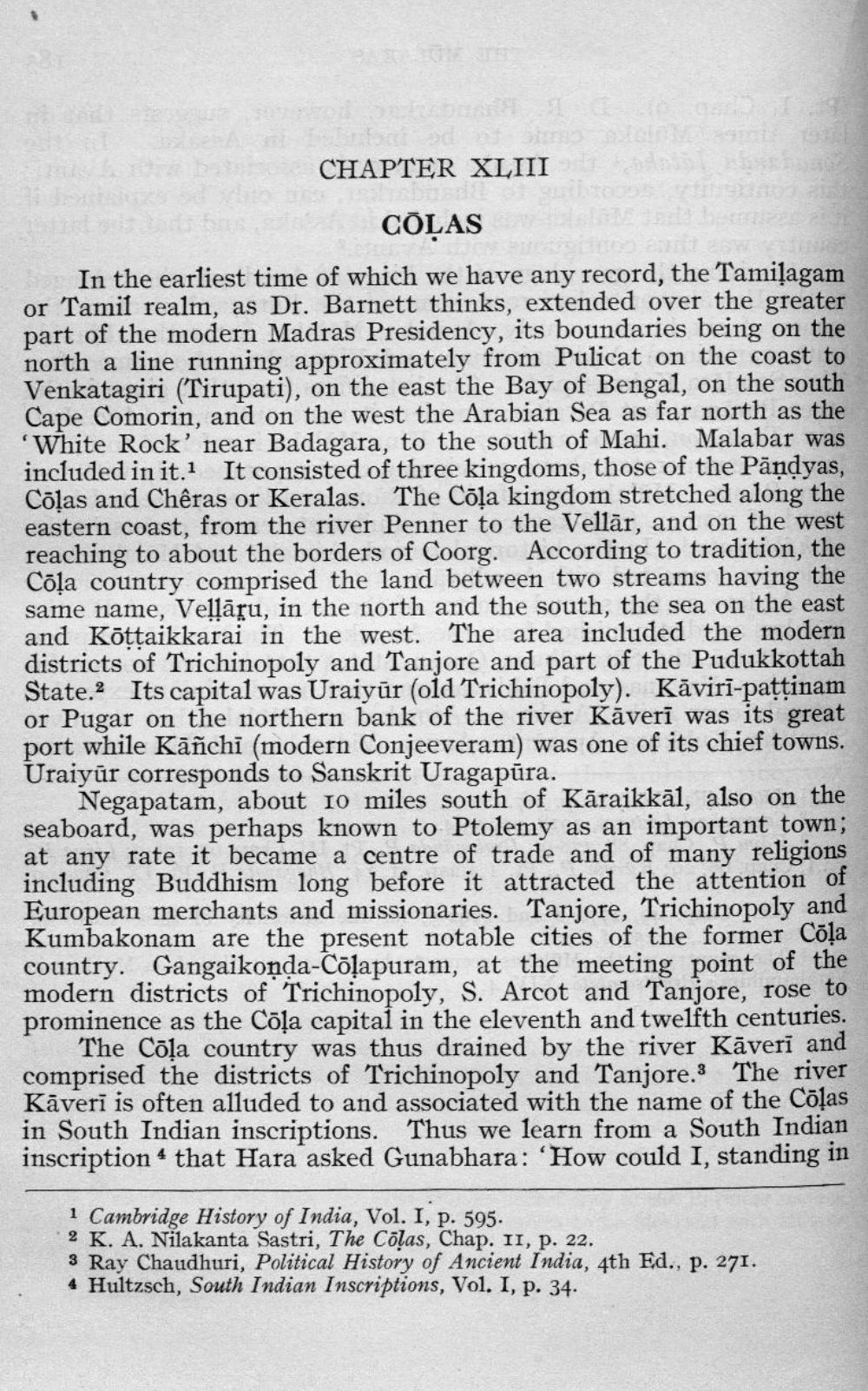________________
CHAPTER XLIII
COLAS
In the earliest time of which we have any record, the Tamilagam or Tamil realm, as Dr. Barnett thinks, extended over the greater part of the modern Madras Presidency, its boundaries being on the north a line running approximately from Pulicat on the coast to Venkatagiri (Tirupati), on the east the Bay of Bengal, on the south Cape Comorin, and on the west the Arabian Sea as far north as the White Rock' near Badagara, to the south of Mahi. Malabar was included in it. It consisted of three kingdoms, those of the Pandyas, Colas and Cheras or Keralas. The Cõla kingdom stretched along the eastern coast, from the river Penner to the Vellār, and on the west reaching to about the borders of Coorg. According to tradition, the Cola country comprised the land between two streams having the same name, Vellāru, in the north and the south, the sea on the east and Kottaikkarai in the west. The area included the modern districts of Trichinopoly and Tanjore and part of the Pudukkottah State.2 Its capital was Uraiyūr (old Trichinopoly). Kāvirī-pattinam or Pugar on the northern bank of the river Kāverī was its great port while Kāñchi (modern Conjeeveram) was one of its chief towns. Uraiyūr corresponds to Sanskrit Uragapūra.
Negapatam, about 10 miles south of Kāraikkal, also on the seaboard, was perhaps known to Ptolemy as an important town; at any rate it became a centre of trade and of many religions including Buddhism long before it attracted the attention of European merchants and missionaries. Tanjore, Trichinopoly and Kumbakonam are the present notable cities of the former Coļa country. Gangaikonda-Coļapuram, at the meeting point of the modern districts of Trichinopoly, S. Arcot and Tanjore, rose to prominence as the Cāļa capital in the eleventh and twelfth centuries.
The Cola country was thus drained by the river Kāverī and comprised the districts of Trichinopoly and Tanjore. The river Kāverī is often alluded to and associated with the name of the Cõļas in South Indian inscriptions. Thus we learn from a South Indian inscription 4 that Hara asked Gunabhara: 'How could I, standing in
i Cambridge History of India, Vol. I, p. 595. 2 K. A. Nilakanta Sastri, The Colas, Chap. II, p. 22. 3 Ray Chaudhuri, Political History of Ancient India, 4th Ed., p. 271. 4 Hultzsch, South Indian Inscriptions, Vol. I, p. 34.




